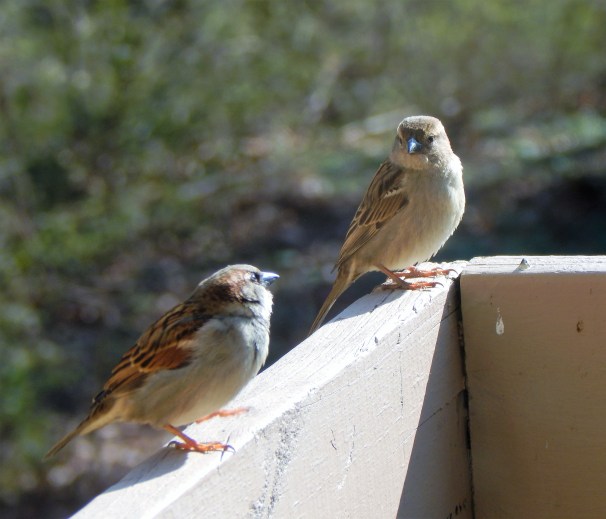The House Sparrow (Passer domesticus) is a bird of the sparrow family Passeridae, found in most parts of the world. A small bird, it has a typical length of 16 cm (6.3 in) and a mass of 24–39.5 g (0.85–1.39 oz). Females and young birds are colored pale brown and gray, and males have brighter black, white, and brown markings. One of about 25 species in the genus Passer, the House Sparrow is native to most of Europe, the Mediterranean region, and much of Asia. Its intentional or accidental introductions to many regions, including parts of Australia, Africa, and the Americas, make it the most widely distributed wild bird. [Wikipedia]
You can find House Sparrows most places where there are houses (or other buildings), and few places where there aren’t. Along with two other introduced species, the European Starling and the Rock Pigeon, these are some of our most common birds. Their constant presence outside our doors makes them easy to overlook, and their tendency to displace native birds from nest boxes causes some people to resent them. But House Sparrows, with their capacity to live so intimately with us, are just beneficiaries of our own success. [All About Birds]
House Sparrow Facts [All About Birds]
- The House Sparrow was introduced into Brooklyn, New York, in 1851. By 1900 it had spread to the Rocky Mountains. Two more introductions in the early 1870s, in San Francisco and Salt Lake City, aided the bird’s spread throughout the West. House Sparrows are now common across all of North America except Alaska and far northern Canada.
- The House Sparrow takes frequent dust baths. It throws soil and dust over its body feathers, just as if it were bathing with water. In doing so, a sparrow may make a small depression in the ground, and sometimes defends this spot against other sparrows.
- House Sparrows aggressively defend their nest holes. A scientist in 1889 reported cases of House Sparrows attacking 70 different bird species. House Sparrows sometimes evict other birds from nest holes, including Eastern Bluebirds, Purple Martins, and Tree Swallows.
- The oldest recorded House Sparrow was a female, and at least 15 years, 9 months old when she was found in Texas in 2004, the same state where she had been banned.








